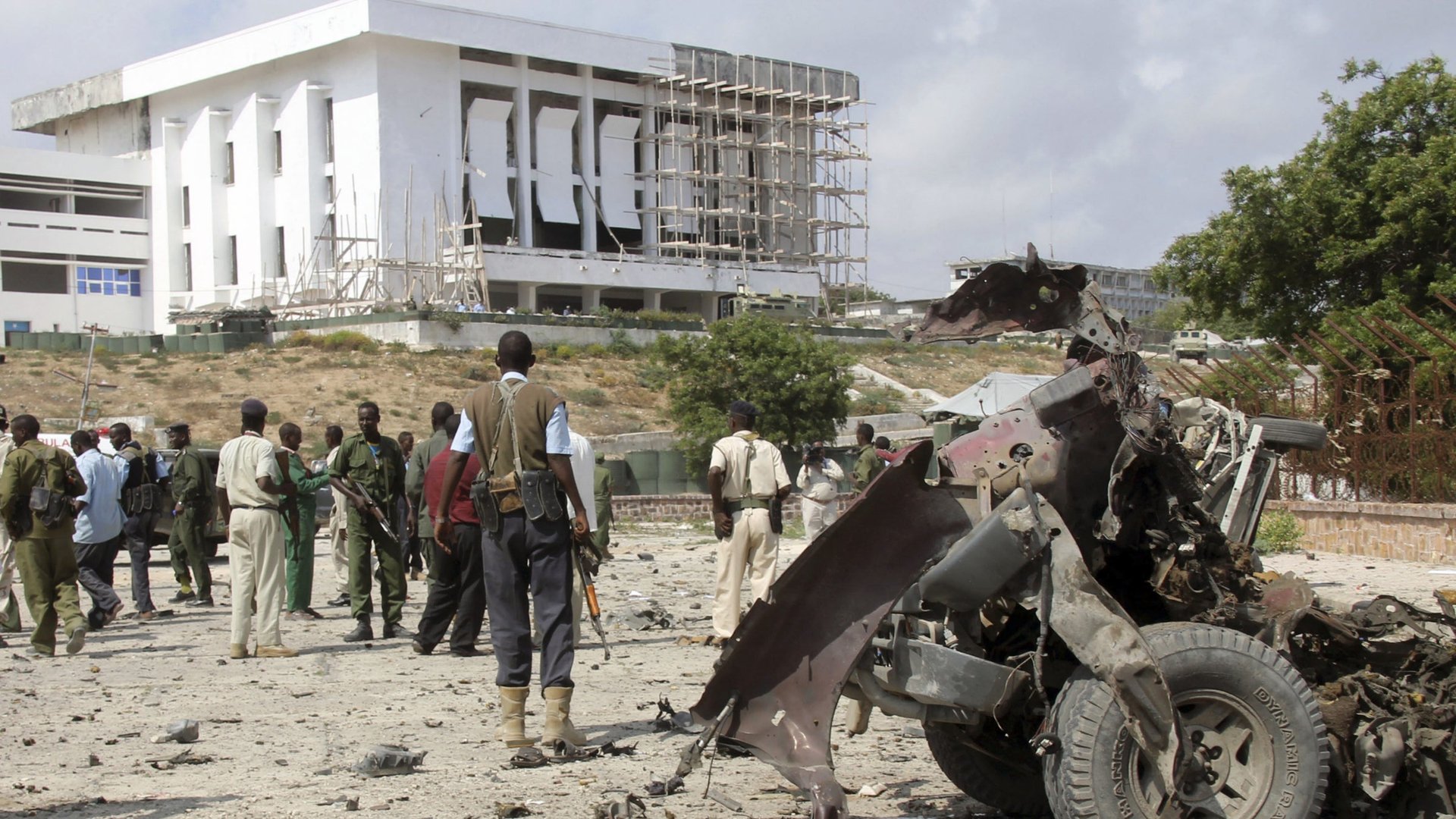Somalia can move from destruction into the space age
The situation in Somalia remains challenging, but has improved considerably. An alliance of African Union and Somali troops has driven the Shabab out of its strongholds without major loss of life. The jihadists will fight on—earlier this month, they sent out more suicide bombers and commandos to kill—but they will be powerless to halt the emergence of a liberated 21st century Somalia. To secure the peace, pirates will have to be kept from putting out to sea, warlords crushed, and young men disarmed. Education and health will need massive investment. Trees and fishing grounds must be protected as a matter of national emergency.


The situation in Somalia remains challenging, but has improved considerably. An alliance of African Union and Somali troops has driven the Shabab out of its strongholds without major loss of life. The jihadists will fight on—earlier this month, they sent out more suicide bombers and commandos to kill—but they will be powerless to halt the emergence of a liberated 21st century Somalia. To secure the peace, pirates will have to be kept from putting out to sea, warlords crushed, and young men disarmed. Education and health will need massive investment. Trees and fishing grounds must be protected as a matter of national emergency.
But the bigger picture needs fantastic thinking. Stability in future Somalia and across future Africa will require choosing and implementing the most advanced technologies. Thinking in space age terms is not far-fetched. Somalia is reemerging in an age of planetary networks. Its lack of a regulatory environment has helped it become one of the most innovative users of cellular technology in the world. Its strong oral tradition and sophisticated trading networks will produce new thinking on how to make the best use of smartphones. But information and communications technology is just the start.
Mogadishu, the country’s ruined but beautiful seaside capital, will double to 4 million inhabitants in the coming decades. Since this growth will happen without enough water and food, with hardly any cash, even less industry, the city will have to manage its inputs and outputs intelligently in order to offset the political risk presented by its underemployed and clannish young men. It will need to capture nearly all of its rainfall for home use, urban farming and landscaping. It will have to learn to recycle sewage by installing microwave latrines that zap waste into fuel bricks and pioneer solar powered-reverse osmosis of brackish water into potable water.
In architecture, Mogadishu must build more densely, while providing public space, security, and privacy. Shacks of the hundreds of thousands of destitute Somalis camped at the edge of the city, whose huts are built now of gathered sticks and shreds of plastic, could be replaced with non-toxic, waterproof, fireproof sheeting that can be easily shipped and assembled. To avoid expensive air conditioning, Mogadishu can install traditional wind sails and chimneys and improve their performance with tracking devices and new materials. Such is the scorching light that falls on the city, and such are the advances in photovoltaic cells, from personal lamps and charging devices through to arrays capable of powering neighborhoods, it is possible the city could be powered by sunlight within a generation.
The robotics behind low cost drones, I believe, could alter traffic flow in Africa at a price cheaper than building new roads and buying in new motor vehicles. Crunching data gathered from cell phones, cheap sensors and satellite imagery, can help show in real time and with fine granularity the complexity of the swelling city. Where does its water and waste flow? What happens to an African city during the long rains? Better prediction of the spread of humans and matter, like improved weather reports, can help decision makers at low cost.
It makes no sense that thinking for radical visions of the future be restricted to the richest and smartest cities in the world. Start with the poorest and most wrecked instead—and Mogadishu, which is ruined and must be rebuilt—can be a proof of concept. Science by itself cannot cure poverty, and technocracy is bound to fail in the face of insecurity and venality, but precisely because Africa is the future, it needs to be avant-garde.